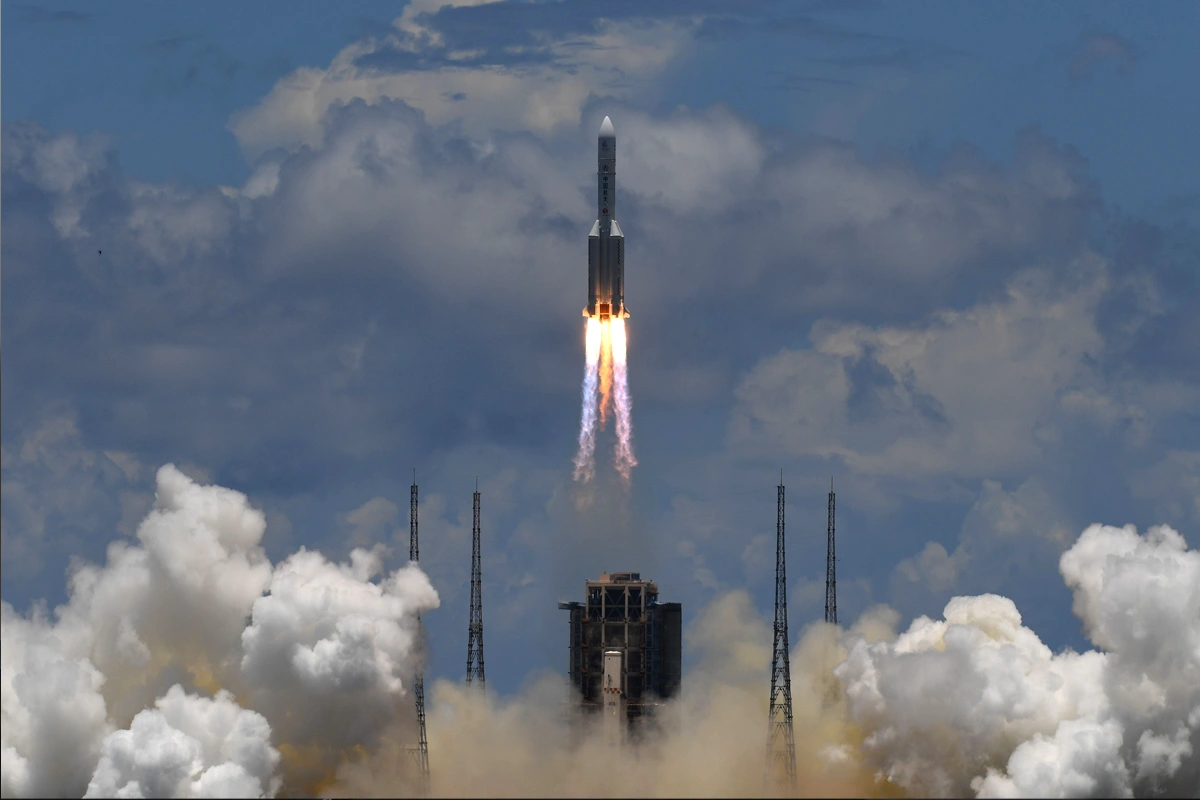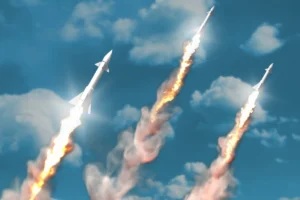There are a lot of questions on the launch of China’s Chang’e 6 mission on May 4th, 2024 to get samples – for the first time – from the far side of the moon. We don’t know why specifically they’re doing that, but we have a pretty good idea (China’s Chang’e 6 mission and the vision of “The High Frontier”) what grand vision China is working towards with their space program.
How? A 2022 video by Chas Freeman (former Assistant Secretary of Defense and Nixon’s interpreter during his era-defining 1972 China visit), who is undoubtedly one of the most knowledgeable former US officials on China. He says that according to his own discussions with people running China’s space program, they’re following the vision described in the book “The High Frontier” by Gerard K. O’Neill, which Freeman says has “become the bible of the Chinese space program”.
I read the book. So what vision does it describe? The book was written in 1976 by O’Neill who was a professor of physics at Princeton University. He also founded the Space Studies Institute, an organization devoted to funding research into space manufacturing and colonization. In other words, he knew his stuff. The book makes the very fair point that we have massive resource constraints on earth, especially given the growing population. He estimated in 1976 that we should be “about six and a half billion people in the year 2000”, and we were 6.114 billion back then so he was pretty prescient. He estimates that these constraints will progressively give rise to more and more social tensions as the growing earth population competes for our limited resources as well as faces global problems like climate change. In his view, dealing with this will either require “an authoritarian regime capable of mounting the immense task of social reorganization needed to escape catastrophe” or, alternatively, “mankind would [need to adopt] a static society [that would be] forced in self-defense to suppress new ideas”. The 3rd alternative is of course the colonization of space. The most interesting aspect of the book is that he claims everything he writes is feasible with knowledge and technology that already existed in the late 70s.
In short, he calls for the establishment of large human habitats in the Earth-Moon system, located at stable Lagrange points (“parking spots” in space where gravity from different spatial bodies cancel each other out). In particular, he developed the concept of what’s known today as the “O’Neill cylinder” which he says “could support quite easily a population of ten million people, growing its food in agricultural cylinders near but outside the main habitat”. Energy-wise, it’d simply make use of solar energy via a system of mirrors. As he describes it: “the concentration of the unvarying, intense sunlight of space by very lightweight, inexpensive mirrors can provide all the energy that industry will ever need […] at a fraction of a cent per kilowatt-hour”.
He envisages building these habitats with material from the moon, shot into space via “mass drivers”, a form of electromagnetic catapult. Also “the habitats would have artificial gravity similar as that of earth by rotating about twenty-eight times an hour”, but he also envisages low-gravity areas, especially for recreational activities such as swimming pools or dancing representations. To trade with earth, he develops the idea of beaming solar power back to Earth via “microwave from solar power stations in orbit”. As he describes it “the microwave beam would arrive at Earth with a beam width of about seven kilometers. Its intensity would be modest, less than half that of sunlight. In contrast to sunlight, though, it would be there all the time, even at night or in clouds or rain, and it would be in a form ready for conversion to DC current with a loss of only 10 percent. The areas receiving these beams’ output on Earth would be fenced, and outside the fence, the intensity of microwave radiation would be no higher than outside a microwave oven with the door closed.
He estimates that if “Satellite Solar Power Stations (SSPS) were to become the sole source of electric energy in the United States in the year 2000, the land area necessary for the SSPS antennas would still be only 0.2 percent of that of the continental United States”. In short, the establishment of space colonies could lead to the fulfillment of a good share of Earth’s energy needs. Last but not least he describes life in space habitats as better than that of Earth, largely thanks to the level of control we’d have over the environment (total climate control which would enable an abundance of food and no natural disaster) as well as unlimited cheap energy.
To conclude, Chas Freeman typically really knows his stuff when it comes to China and he’s very intellectually honest (a rare trait among US officials) so I have no doubt he tells the truth when he says the Chinese told him that was the vision. And China famously thinks very big and very long term so it would be quite like them to go for something like this. There are also quite a few tangible signs that China is working towards that vision. See for instance this November 2022 news where “China’s space station will join a project to collect solar power from space and send it to Earth in a high-energy microwave beam”: https://scmp.com/news/china/science/article/3200819/chinas-space-station-will-run-high-energy-beam-experiment-controversial-solar-power-plant-chief That’s exactly O’Neill’s vision!
Or check this October 2022 news that says China is developing new “electromagnetic sledges” that can propel a carriage weighing a few tonnes to a record speed, with a key application for this being “aerospace”: https://scmp.com/news/china/science/article/3196667/hurry-chinas-electromagnetic-sledge-cruises-nearly-speed-sound Remember: O’Neill’s vision is to build his habitats with material from the moon, shot into space via “mass drivers”, a form of electromagnetic catapult.
So there you go… Or also the fact that the Chinese will build, together with the Russians, a moon base – planned for 2028 – powered by a “space nuclear reactor” that’s already been developed (on Earth) and has passed review by China’s Ministry of Science: https://scmp.com/news/china/science/article/3200569/china-developing-new-nuclear-system-power-moon-base-expected-be-and-running-2028 The space nuclear reactor can generate 1MW of electricity, enough to power 10 International Space Stations. Enough power, maybe, to undertake mining activity and power an electromagnetic catapult… After visions change, the world changes, so it’s also possible that China’s view on what they want to do has evolved. In any case, Chas Freeman is right that China’s motivation for all its initiatives in space can’t just be to “boldly explore where no one has been before”, they have to be working towards something.
Freeman is also absolutely right to lament that the U.S. decided to ban any cooperation in space with the Chinese. Those endeavors are something that could have been jointly developed as a multilateral effort to unite us all as a species…
Instead, China is now forced to go at it alone with Russia and we face a future where our petty divisions on Earth will be carried with us to space…












